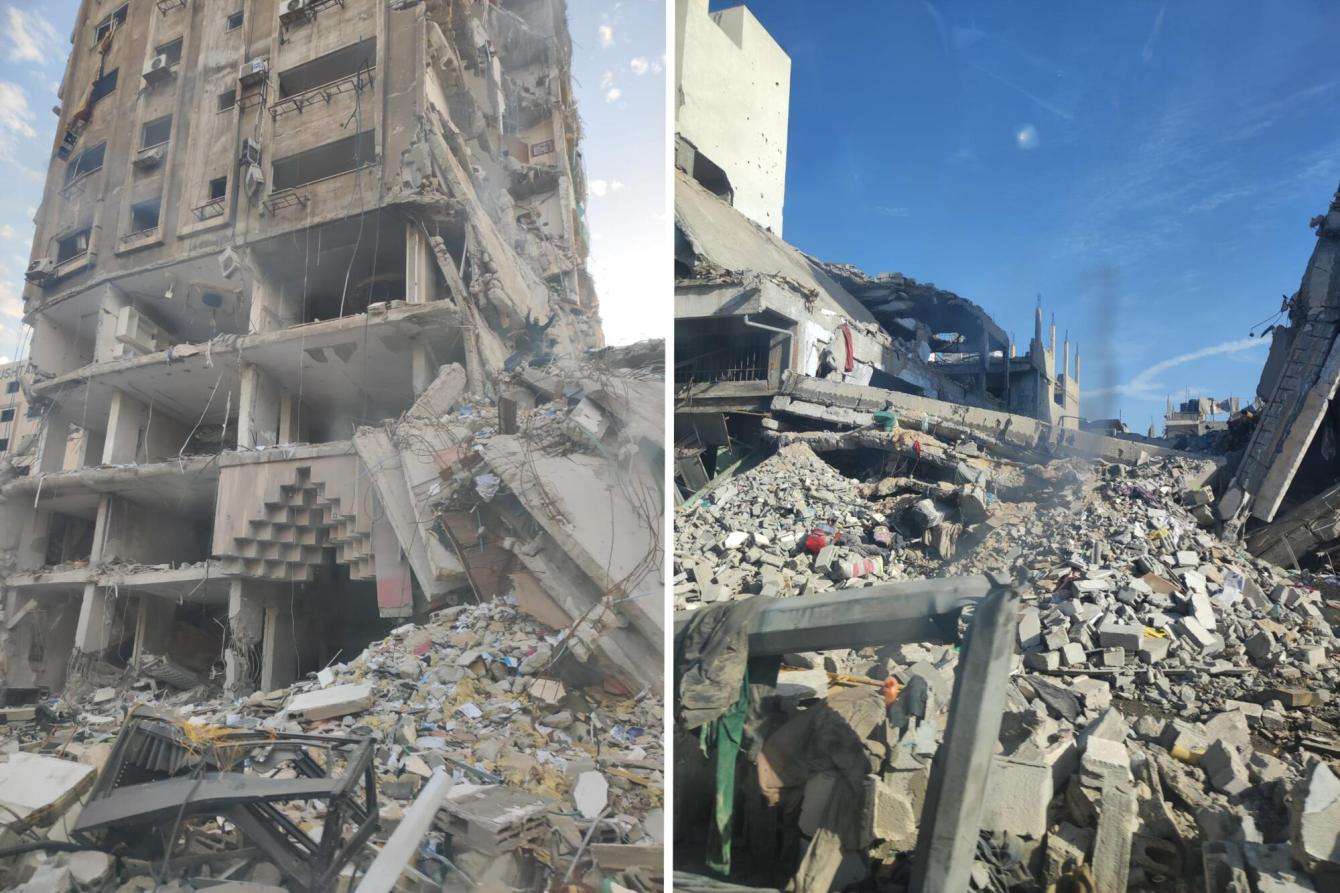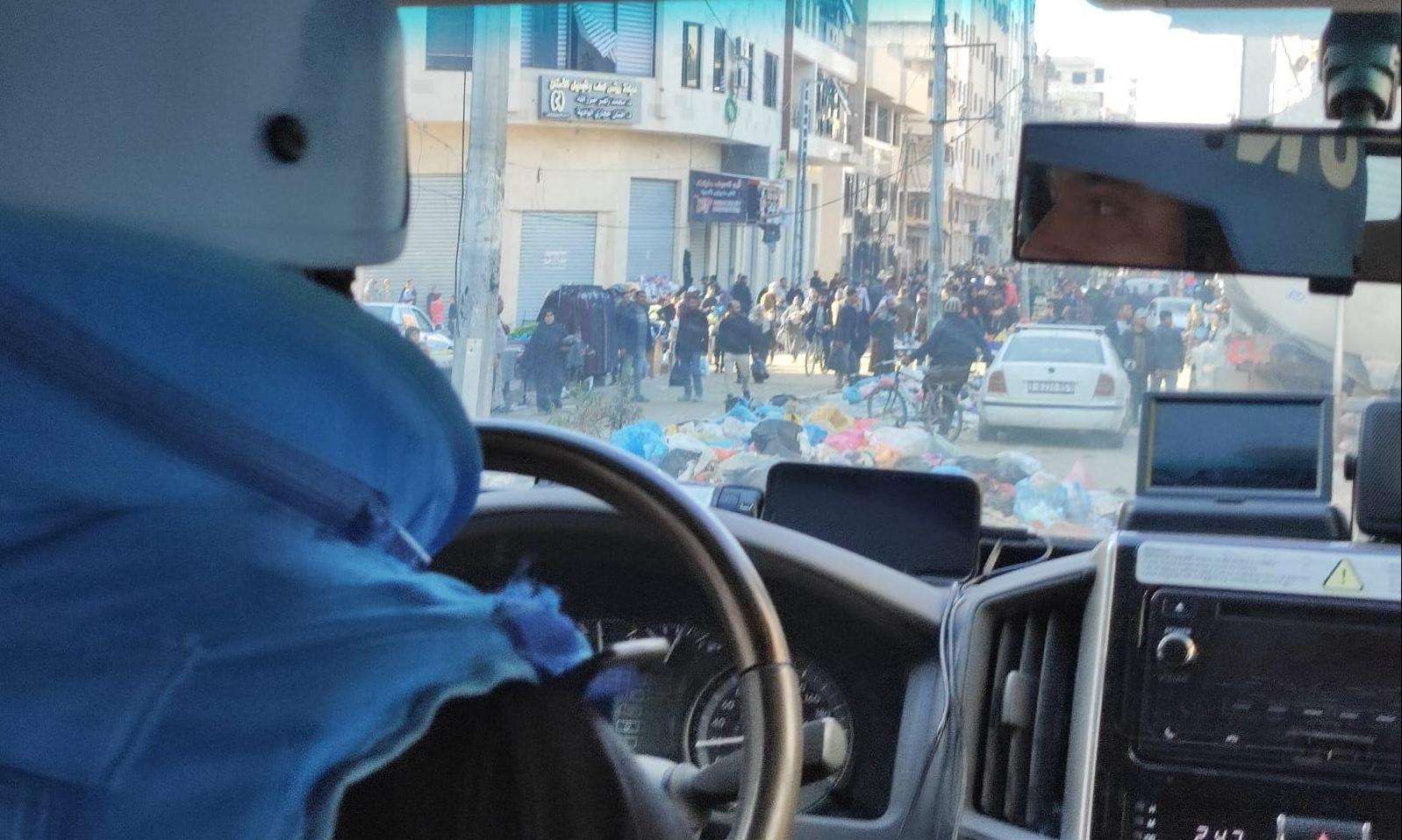Doctors Without Borders/Médecins Sans Frontières (MSF) is now trying to find a way to safely send staff back to resume the medical activities it was forced to suspend at Al-Shifa in November and increase access to health care as the needs continue to grow amid unabating conflict.
On January 22, Aurélie Godard, head of MSF’s medical activities in Gaza, was able to visit the hospital as part of a supply convoy organized by the United Nations. Here, she shares what she saw during her visit.
The main objective of this convoy was to deliver 19,000 liters [over 5,000 gallons] of fuel to Al-Shifa. This fuel is essential because it is used to run the generators that supply the hospital with electricity. We managed to pass the checkpoint which separates north and south Gaza at the beginning of the afternoon, and immediately afterwards, our two cars and the fuel truck were surrounded by a crowd of young people in need of water and food, as both are in short supply. They were really disappointed that we were only transporting fuel. We had a lot of difficulty getting through this very dense crowd of hungry people.

Three operating rooms, but few resources
Al-Shifa Hospital is still standing, but it is badly damaged and barely functional. In the corridors, the ceilings have been ripped open, and we have seen IV bags [to provide patients with drugs intravenously] hanging directly on the walls of the hospital, for lack of a better alternative. The medical teams on site managed to get the emergency room up and running, but it is largely occupied by patients who have been admitted. The rest of the hospital is filled with displaced people seeking safety.
The health personnel manage to receive and triage the injured and stabilize them, but they are stuck because there is a severe shortage of hospital beds. Doctors have a resuscitation space, where people in life-threatening, critical condition can be treated either for chronic illness, or, most often, because they have been injured by a bullet or in an explosion. During our visit, we regularly heard explosions not far from the hospital.
The team at the hospital—made up of many volunteers, including two from MSF—managed to set up three operating rooms for urgent surgeries. Medical staff want to reopen the intensive care unit. However, right now, they have no way to properly monitor the patients they manage to operate on.
In the emergency room, we saw a seriously injured patient who had arrived the day before. He’d had a tracheotomy, a chest tube inserted, and also abdominal surgery. He was surrounded by dozens of other patients in a room without electricity as generator fuel is scarce, and therefore his vital functions weren’t being monitored because the monitoring devices were not working. The team told us that they had recently lost a patient because they were unable to give him a blood transfusion. Their blood bank was empty. They work in terrible conditions.

Needs remain high in northern Gaza
Staff at Al-Shifa are struggling to care for patients because the needs are huge. There are a lot of people in the hospital and all around, made up mainly of those who are displaced. There are still many people living in northern Gaza, and many of them have suffered trauma related to war injuries, but also because of poor living conditions and winter illnesses.
The number of patients is very high and medical staff have reported difficulties in many areas, whether with the supply of oxygen, electricity, medical equipment, or simply food. All of this makes providing medical care extremely difficult, and they have enormous operating difficulties to overcome. The convoy's 19,000 liters of fuel [over 5,000 gallons] will supply the hospital for barely a week. Around 3,000 liters per day [about 792 gallons] are required for it to be functional.
This visit was very short as the journey from the south of the Gaza Strip took us a very long time, and we were not allowed to stay there for long. The convoy was supposed to go to the hospital five days earlier, but it was impossible to go then for various reasons.
It was moving to see the surprise of patients, displaced families, and staff at the sight of new people after being holed up in the hospital for weeks by themselves.




